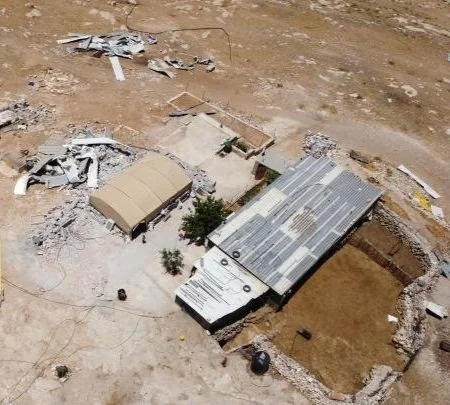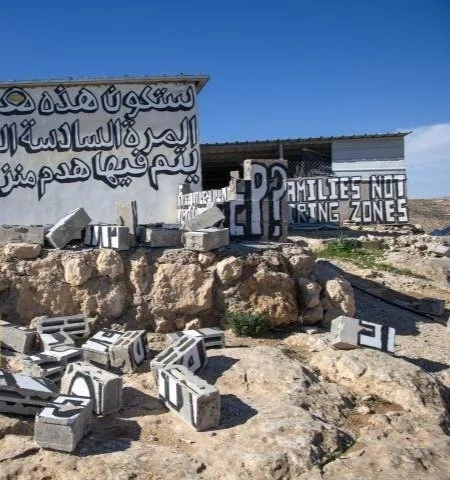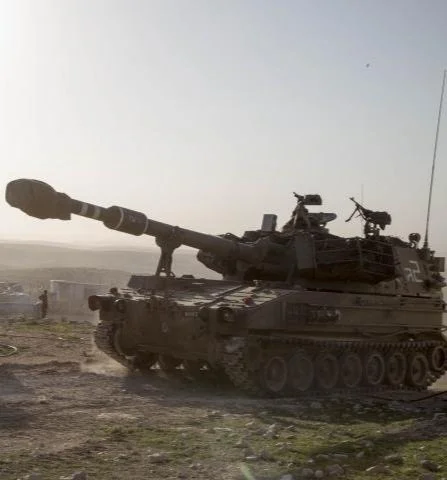Fearless individuals have been collecting tons of documentation of horrific settler violence—crimes against humanity, as well as nature for years already in the Occupied Palestinian Territories This page is just the beginning— a representation of our efforts to aggregate vast NGO archival data that we aim to link to geographical locations, so that the world can see what’s happening NOW, before the map project is properly launched.
resources
VIDEOS
“Ali Awad, a writer and activist from Tuba in Masafer Yatta and Maya Rosen, a Jerusalem-based Palestine solidarity activist, join FMEP’s Sarah Anne Minkin for a discussion of how Palestinians in Masafer Yatta continue to build their lives despite the constant existential threat they are under, what they expect from the Israeli Supreme Court, and the international campaign they have launched to save their villages. We’ll also discuss the role of the Israeli judiciary in enabling Israeli apartheid and Israel’s use of the “firing zone” designation as a means of confiscating Palestinian land.” - FMEP
Journalist Yigal Mosko’s 15-minute report, aired on Channel 12 primetime, exposes the harsh realities of life in the South Hebron Hills. The report covers Palestinian children needing military escorts to school due to settler threats, military training exercises within Palestinian villages, frequent demolitions and property confiscations, soldier-perpetuated settler violence against Palestinians, and the expansion of illegal settler outposts connected to Israeli infrastructure. It was posted on YouTube three days after its original airing by the activist group, Breaking the Silence.
“In the South Hebron Hills, the southernmost region of the West Bank, there are about 122 communities of shepherds and farmers totaling about 80,000 inhabitants. The communities settled there in the early 19th century in order to be close to the pastures and agriculture they owned. In recent decades, Palestinian residents have suffered abuse from violent settlers, which the army either turns a blind eye to or cooperates with. Living in a land declared as a 'closed military zone’ by the army, Palestinians in the area experience daily the expropriation of their land, the demolition of their homes, and cutting of these water pipes.” - Israel Social TV
This video by B'Tselem covers Israel’s designation of 3,000 hectares of Masafer Yatta as 'Firing Zone 918' in the early 1980s. Palestinian families, living there for years as farmers and shepherds, were expelled in 1999 for “illegally living in a firing zone.” A petition to Israel’s High Court allowed their return but barred new construction, leaving their lives on hold for over 20 years. Despite ongoing legal battles, residents face demolitions and are unable to develop their communities. The High Court's stance supports the forced displacement of these residents, considered a war crime under international law.
ARTICLES
In Ali Awad's poignant account, he shares the harrowing experience of his family in Tuba, South Hebron Hills, following a vicious attack by Israeli settlers. Recounting the night when their entire year's hay reserves were maliciously set ablaze, Awad reflects on the profound devastation and helplessness they felt as flames engulfed their livelihood.
ALI AWAD, JULY 20, 2021 (+972 MAGAZINE, ENGLISH)
AMIRA HAAS, APRIL 26, 2021 (HAARETZ, ENGLISH)
Amira Hass's article exposes the plight of Palestinian villages in Masafer Yatta facing demolition by Israeli authorities to create firing zones. Despite historical evidence, including compensation for demolished homes in 1966, Israel denies the villages' existence.
AMIRA HAAS, FEBRUARY 4, 2021 (HAARETZ, ENGLISH)
Amira Hass reports in Haaretz that the Israeli army conducted large-scale military exercises in Masafer Yatta, South Hebron Hills, damaging farmland and cisterns despite promises to avoid such activities. This marks the first time in seven years that such drills have taken place in these Palestinian villages.
B’TSELEM, JANUARY 1, 2013/UPDATED MAY 12, 2022 (B’TSELEM, ENGLISH)
This article offers a comprehensive examination of Israel's efforts to displace Palestinian communities in Masafer Yatta, particularly through the case of 'Firing Zone 918,' detailing historical presence, legal battles, and recent court decisions. It highlights the residents' enduring struggle against forced eviction and the unjust legal justifications employed by Israeli authorities to demolish their villages.
REPORTS
ASSOCIATION FOR CIVIL RIGHTS IN ISRAEL, BREAKING THE SILENCE, HAQEL, KEREM NAVOT, RABBIS FOR HUMAN RIGHTS, OCTOBER 15, 2020 (ENGLISH)
This is a legal overview of the protracted struggle faced by residents of twelve Palestinian villages in Masafer Yatta, under constant threat of demolition and eviction since the IDF declared the area a "firing zone" in the 1980s. Despite legal battles, the potential expulsion of hundreds of residents remains imminent, highlighting the urgent need for diplomatic and humanitarian interventions to protect the rights of affected communities.
“This report documents the expulsion of the residents from their homes, noting the considerations involved in the decision to implement the expulsion. This report also describes the state's position, as presented to the High Court of Justice in ACRI Petition.” -B’tselem
B’TSELEM, FEBRUARY 2000 (ENGLISH)
B’TSELEM, JULY 2005 (ENGLISH)
“This report is a follow-up to B’Tselem’s report in 2000 that documented Israel’s attempt to expel the cave residents in November 1999. The present report documents Israel’s efforts to complete the expulsion through the legal proceedings that have been taking place ever since, and describes the lives of the cave residents under the threat of settlers, the military, and the Civil Administration
Photo by Margaret Olin, “Can Rocks Feel Pain? The Bitter Landscapes of Palestine.”
Photo by Oren ZIv, ActiveStills.
Photo by Oren Ziv, ActiveStills.
Photo by Heather Sharona Weiss, ActiveStills.
Photo by Omri Eran Vardi, ActiveStills.
Photo by Omri Eran Vardi, ActiveStills.
Photo by Omri Eran Vardi, ActiveStills.
Photo by Keren Manor, ActiveStills
Photo by Ahmad Al-Bazz, ActiveStills.









